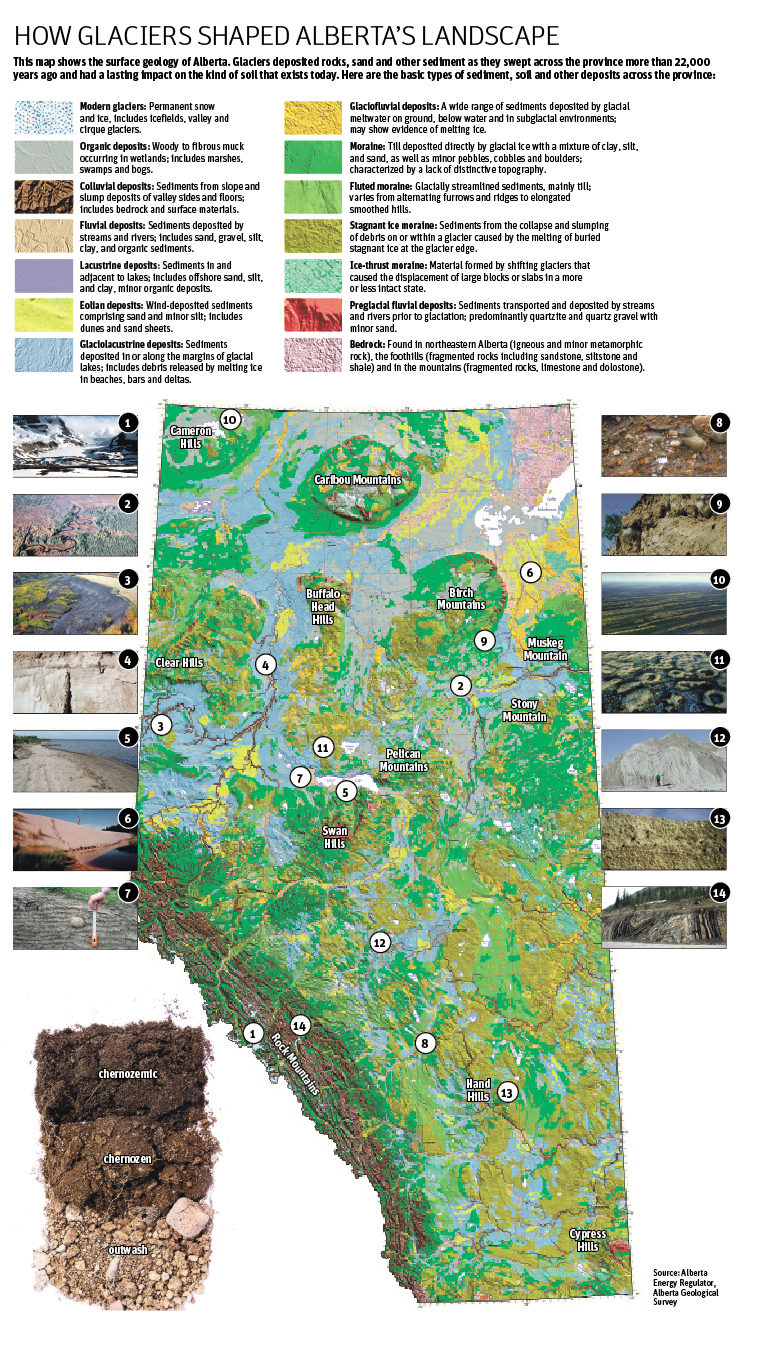LACOMBE, Alta. — Knowing a bit of history may lead to better soil management.
“If you know the kinds of soils you are farming and how they were laid down, it tells you a lot about the characteristics and helps you decide what are the things you need to be worried about,” said Ross McKenzie, a retired soil scientist and consultant.
Around 10,000 to 12,000 years ago Alberta was under a 1 1/2 kilometre thick glacier. Lakes and various types of soil and silt deposits were left behind as the glaciers started to melt and pull away.
Read Also

Agritechnica Day 3: Hybrid drive for a combine, data standards keep up to tech change and tractors of the year
Agritechnica 2025 Day 3: Hybrid drive for a combine, data standards keep up to tech change and tractors of the year.
“Big parts of this province were covered in water in the last time through when the glaciers were here,” said agrologist Roger Andreiuk during a soil demonstration at Canolapalooza held in Lacombe June 27.
The result is clay, silt and sand left behind to be reworked by wind and weather.
“In about half of our landscape, the materials have gone through some sort of water sorting,” he said.

Central Alberta is mostly fluvian lacustrine soil or black chernozem. In some places the soil horizon reveals ripples left behind at the bottom of an ancient lake. Other parts of the province are covered with the debris that glaciers left behind.
“About half the province that we are farming is glacial till and the other half is mostly fluvial lacustrine,” Mckenize said.
“The more you know about your soils, the more you know about how variable or not variable they are,” he said.
Glacial till is moderately rolling, hummocky, clay loam plus more salt and rocks.
Fluvial sandy soil is an undulating sandy loam.
Fluvial lacustrine is gently undulating, loam to clay loam.
Lacustrine was once the bottom of a glacial lake. It is clay soil with level topography with few stones.
Armed with this information, producers can make better decisions about the type of fertilizer or other amendments that can be used on the soil as well as understanding what lies beneath the surface.















